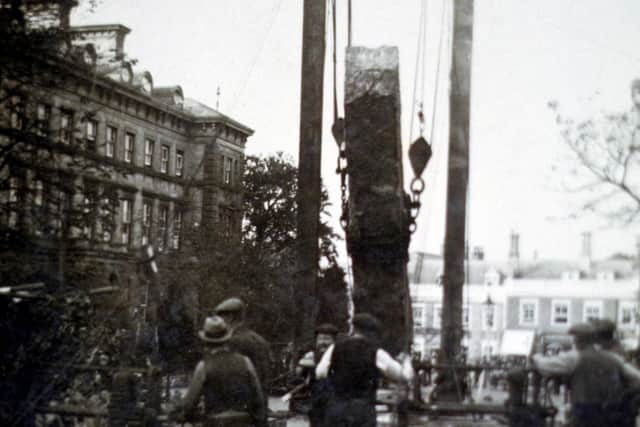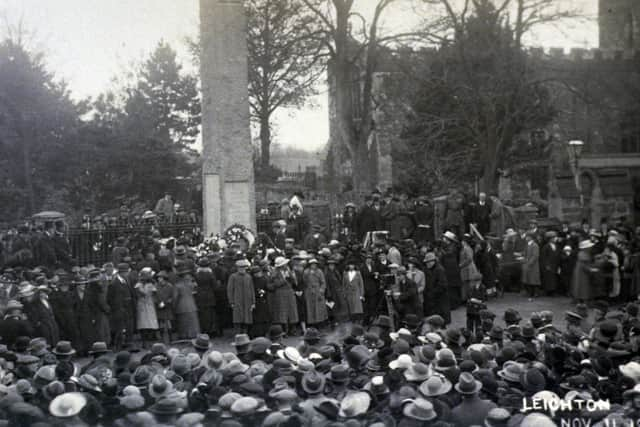ARMISTICE DAY: Thousands attended Leighton Buzzard war memorial unveiling 100 years ago today
and live on Freeview channel 276
The memorial, weighing 22 tonnes, is the largest undressed piece of granite ever mined in the UK. It was quarried just south of Shap Village in the Lake District and contains large pink fieldspar crystals.
The nearly 10-metre length and huge weight of the stone meant erecting it was a major engineering feat that took three days at the end of October 1920.
Advertisement
Hide AdAdvertisement
Hide AdThe monolith had lain in a builders yard in London for some years before Robert Richmond, a Leighton magistrate, who had lost two sons in the war, bought it on behalf of the Leighton Buzzard War Memorial committee.


It was unveiled on November 11, 1920, exactly two years after the armistice that ended the war. Church Square was crowded with the relatives of the 171 dead from Leighton whose names are inscribed on the stone.
Their surviving comrades saluted the memorial as they marched past. Around 5,000 people were said to have attended the ceremony, most of the citizens of the town – which then had a population of only 6,000.
The memorial was unveiled by Lord Ampthill, who gave a speech in which he referred to the fact that there was some disillusionment with the war and included an appeal to employ ex-soldiers many of which were still without a job.
Advertisement
Hide AdAdvertisement
Hide AdThe sighting of the memorial had been controversial as some people wanted it in the middle of the road so the dead would not be forgotten.


In the end the vicar, the Rev Frederick Hills, allowed a chunk of his garden next to Church Square to be sold to the committee as a site for the memorial.
Some critics wanted the granite to be polished rather than left rough but the response to this from the Leighton Buzzard Observer was this: “Leightonians of a thousand years hence, when perhaps tramways run on either side of the monument into the distant suburbs of a large city, will probably look with reverence upon this rugged mass of granite, with the names still legible upon its panels, and think kindly of those rugged fighters whose granite courage saved Britain in her hour of need.”
This comment from the editor of the newspaper apparently silenced all complaints.
Advertisement
Hide AdAdvertisement
Hide AdAfter the Second World War, 51 further names of those who died in that conflict were added and later the name of one soldier lost in the Korean War (1950-1953).
Historic England has listed a total of 60 war memorials in the East of England as part of the Remembrance Day tribute.